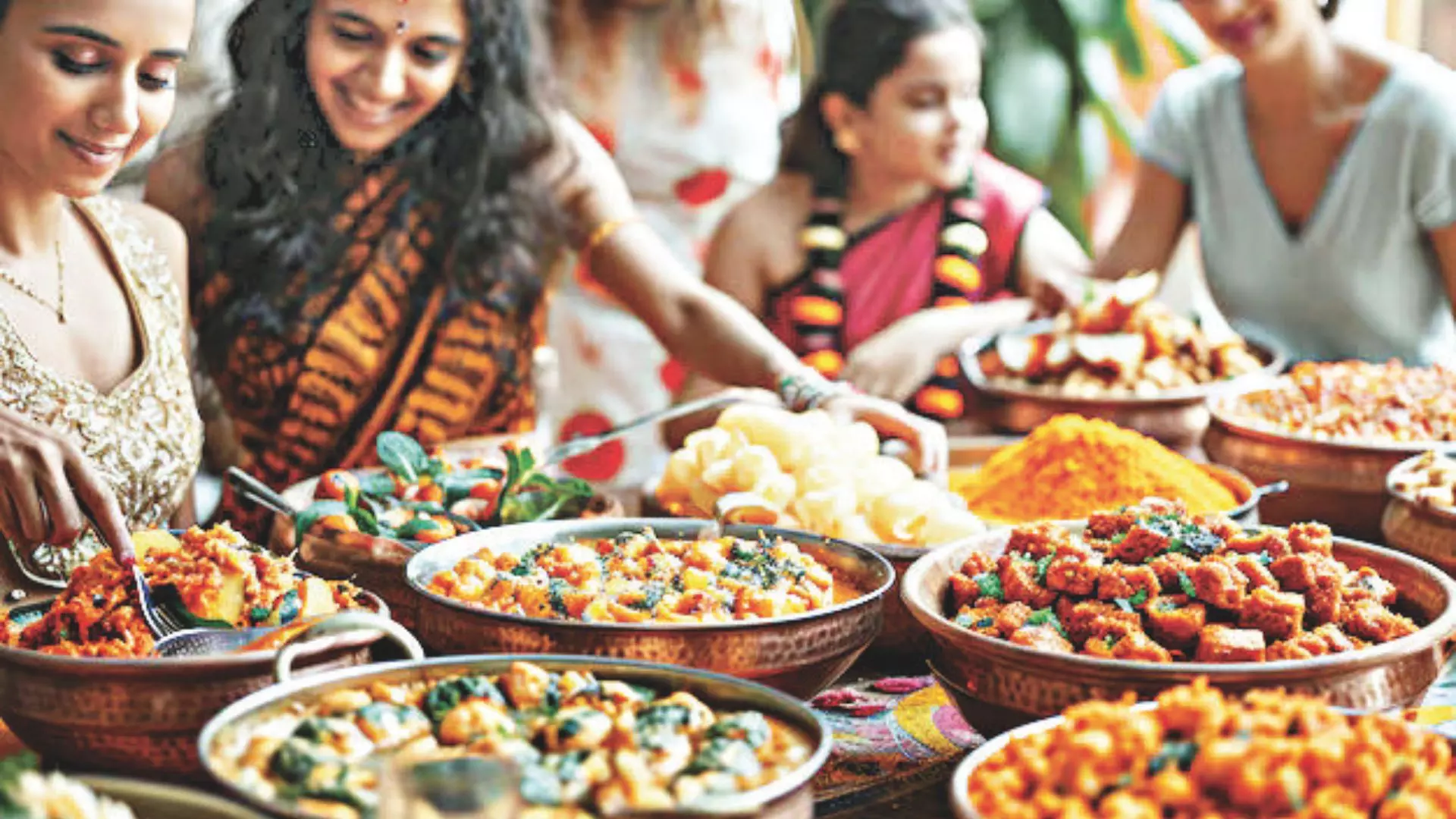The Desi Leftover Makeover Feast
From repurposing rice into fried rice to turning bread into delectable bread pakoras, explore how Indians add a desi twist to leftovers to create wholesome meals

Indians have turned ‘jugaad’ into an art form. Whether it’s dads turning into DIY plumbers or moms, fixing some of the most sumptuous soul foods from what others might see as scraps. For example — leftover idlis converted into sassy ‘Chinese Idlis’ or day-old rice rustled up into mouthwatering masale bhaat, and leftover fried fish converted into fish cutlets. The list just continues.
India’s culinary creativity shines in our leftover dishes, each one as diverse as the regions they come from. Whether it’s the robust Kothu Parotta from Chennai, the cooling Panta Bhaat from West Bengal, or the indulgent Ghee ki Churi from Punjab, the flavours vary as widely as our landscapes — but the deliciousness is universally guaranteed.
Value+Invention
Not just flavours, but this practice also teaches us the resourcefulness of Indian culture. “The concept of Annadata Sukhi Bhava (May the provider of food be blessed) is significant in Indian households, encouraging the use of every bit of food. Historically, food scarcity and the agrarian economy also reinforced the habit of reusing leftovers creatively,” says Natasha Gandhi, a former contestant of MasterChef India S6 and a food influencer on Instagram.
As per Tejal Tank, a student of hospitality from Mumbai, the experimentation with leftovers also shows the innovativeness of Indian moms. “You see, any dish can be made flavourful with a baghar (heated oil/ghee seasoned with spices, onions, and garlic). That’s what moms do when they don’t want to throw out the food,” adds Tank.
Northern (De)lights
Known for its wheat-based diet, in northern states of India, particularly in Punjab and Uttar Pradesh, leftover vegetables are often repurposed into stuffed parathas. Aloo sabzi, mooli (radish), or even leftover dal can be kneaded into dough and rolled out into parathas. “The beauty of leftover parathas lies in their versatility,” says home chef Seeta Dixit, a resident of Mumbai. “You can use any leftover sabzi, add some spices, and the result is a hearty, flavourful paratha that pairs perfectly with a dollop of yoghurt or pickle.”
The paratha is not just a meal; it’s a canvas for creativity. Families often add their twist to the basic recipe, incorporating regional spices, and herbs, or even adding a touch of ghee for that extra richness.
Each leftover dish carries a story. For Gandhi, the Punjabi delicacy known as Ghee ki Churi, often transports her to childhood. “My mother would turn leftover rotis into a comforting snack by mixing in some ghee and jaggery for a sweet version or ghee and spices for savoury Churi,” she says.
Flavours of East
In the breezy east, dishes made from leftover rice prevail. So, the tangy Panta Bhaat from Bengal, the sweet Assamese Handesh (fried rice cake), and Odisha’s crunchy Chuda Bhaja (crispy flattened rice) showcase culinary creativity.
From Macher Tel Bhaja made with fish remnants to Bihar’s spicy Litti Chokha (baked wheat balls served with mashed veggies), these resourceful recipes turn leftovers into flavourful delights, reflecting the region’s rich food heritage.
Selina Nandi, a media graduate recalls her comfort food being eggs made with leftover gravy of mutton curry. “Since the mutton pieces used to get finished, my mother used to crack a few eggs and put them in the gravy. We used to then relish the dish with rice,” she adds.
For Nandi, food became her ticket to fond memories of the time she spent with her family. “These little anecdotes shared over meals have stayed with
me, especially now that I live alone. They bring me comfort, reminding me of the time I spent back home.”
Tasteful West
Western India, the land of khakras and bhakris, has a knack for transforming leftovers. Phodnicha bhaat in Maharashtra gives the rice a flavourful makeover, while Gujarat’s Thepla Chivda and Vaghareli Rotlo make flatbreads irresistible, not to mention the invention of pizza bhakris.
Being a Gujarati, Tank mentions her experiments in the kitchen, which taught her to make Sev Khamni, from leftover Dhoklas, a dish made with gram flour which is given a splash of hot oil with spices and curry leaves.
However, for Gandhi, it was her grandmother’s recipe of Phodnicha Bhaat that began her love for food. “The simple act of turning cold, leftover rice into something flavourful with just a few spices taught me early on that food is not just about ingredients but about the love and creativity you put into it,” she says.
Southern Swag
We end our tour in South India, which is a land much more diverse than one’s imagination. This culturally rich place is equally rich in the delicacies it offers. Idli Upma revives idlis, while Kothu Parotta gives parottas a spicy twist and Pulihora adds tang to leftover rice.
Shakti Suresh, a graduate of economics says, “As a dairy lover and South Indian, I love my curd rice, made from day-old rice. If paired with a packet of chips, I could survive on it for quite some time.” He further mentions a fusion recipe of Pav Bhaji Dosa that his aunt used to make to finish the leftover bhaji. “While I was naive to think it was a whole new combination back then, I realize now that it was a good bonding moment between me and my aunt. It’s two cuisines intertwined for a 10-year-old, but he nor his sister are complaining early in the morning while the rest are asleep” adds Suresh.
The frugal yet resourceful mindset of Indians helps us to make the most of what we have. This extends beyond the kitchen, into every aspect of our lives.

